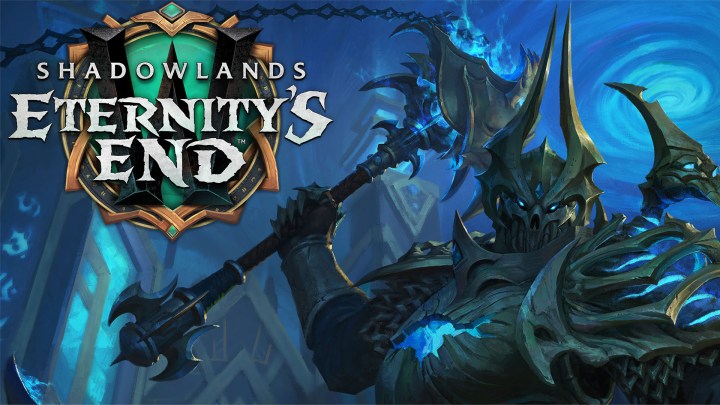Want to Get Ahead in Rigging?
From stylized to realistic character rigs — from beginner to expert — try these techniques from The Gnomon Workshop to get a headstart in rigging
Animators usually receive the lion’s share of credit for great animated performances. They are responsible, after all, for teasing from pixels such moments as Moana’s battle against Te Kā and Riley’s melancholic smile when Joy and Sadness combine. Such moments could not exist, however, without the technical foundations laid by extremely talented riggers.
A good rig always lies behind a solid animated performance — whether that performance is funny or dramatic, subtle or action-packed — and riggers should always share the limelight alongside their animator brethren.
In celebration of the all-too-often overlooked art of rigging, check out this great round-up of The Gnomon Workshop’s recent rigging tutorials, plus a bonus addition. From stylized to realistic, from beginner to expert, from manual processes to Python automation — find a gamut of techniques that will give any willing rigger a head start on their journey.
Whatever methods are covered, the goals are the same: the creation of production-ready, animator-friendly rigs that empower outstanding performance.
Get started at The Gnomon Workshop with a Free 3-Day Trial >
Master Rigging and Python Scripting in Maya: Create Helper Scripts and a Python Limb Rig
Instructor: Nick Miller
Software covered: Maya
Disciplines covered: Character rigging, Scripting
Duration: 5 hours
Proficiency level: Beginner-Intermediate
Any rigger could arguably get by in their day-to-day without learning the particulars of scripting. Many studios have rigging tools built into their pipeline, after all. In the long run, however, overlooking scripting will ultimately cost a rigger time, as they’ll lack the ability to automate repetitive tasks or customize rig setups for greater efficiency.
Thankfully, Nick Miller, Senior Creature TD at DNEG, has put together this exhaustive but accessible look at Python scripting in Maya. Miller structures this rigging workshop so even someone with zero scripting experience can follow what would otherwise be a complex topic. Nick eases into scripting fundamentals and gradually explores increasingly complex topics alongside step-by-step demonstrations of the process.
By the time the workshop’s wrapping up, artists will have created several helper scripts, a Python limb rig setup with basic controls and IK/FK switching, and a graphical user interface. These skills will come in invaluable when riggers need to update, customize, or optimize rigs in a real production setting.
Rigging the Jaw with Python in Maya – How to Create a Rebuildable Jaw Rig and Zipper
Instructor: Arturo Coso
Software covered: Maya
Disciplines covered: Character rigging, Scripting
Duration: 5 hours
Proficiency level: Intermediate
Rigging a jaw may seem simple to an outsider — the jaw goes up and down, how hard can it be? Artists, of course, know the process is far more complex, with elevation accompanied by mandibular depression, lateral deviation, retrusion, protrusion, and more.
The jaw really is more mobile, and as a result, more expressive, than many realize. (One need only see clenched teeth to recognize their owner isn’t feeling at their most cheerful!) As such, an artist who can rig a jaw for all kinds of different scenarios is an artist in demand.
Enter Love Death & Robots rigging artist and TD Arturo Coso, who reveals how to create rebuildable, production-ready, complex jaw rigs in a highly efficient way. Riggers get to code Python line by line alongside Arturo as he builds a rig using an independent setup. He explains how to use guides and procedural processes, how to create parent constraints from different sources, how to create main connections and jaw attributes, and more.
By the end of the tutorial, riggers will be equipped to build jaw setups animators will love for their efficiency, ease of use, and expressiveness.
Creating Stylized Facial Rigs for Production in Maya – Master Convincing Character Expressions
Instructor: Hector Abraham Torres
Software covered: Maya
Disciplines covered: Character animation, Character rigging
Duration: 4 hours
Proficiency level: Intermediate
As a character rigger at Sony Pictures Animation with experience on shows like The SpongeBob Movie: Sponge on the Run, Hector Abraham Torres knows a thing or two about elastic-faced characters.
In this workshop, Hector reveals how he approaches such cartoony, joyful facial expressions, and how others can achieve the same result. The workshop kicks off by covering the fundamentals of actual facial anatomy and discusses why a grasp of real biological musculature is crucial, even when working on a stylized rig.
From there, Hector explores topology tips for robust facial deformations; sculpting techniques for a full facial rig; blendshapes for the nose, cheeks, lips, brow, and eyelids; and more. Riggers also learn how to create a user interface with simple controls that will make any animator your friend. (You can download the UI Hector creates as a downloadable project file, too!)
Watching all four hours of this tutorial will furnish any hopeful rigger with the skills required of stylized facial rigs, whether they’re for film, TV, games, VR, or beyond.
Introduction to Creating Facial Blendshapes in Maya – A Complete Guide to FACS Blendshapes Using Maya and ZBrush
Instructor: Derrick Sesson
Software covered: Maya, ZBrush
Disciplines covered: Character animation, Character rigging, Lighting & rendering
Duration: 5 hours
Proficiency level: Beginner-Intermediate
Even if you’re unaware of what FACS is, exactly, it’s likely you’ll have seen the Facial Action Coding System in action in behind-the-scenes movie featurettes. Have you ever seen your favorite actor gurning through a series of extreme facial expressions towards a camera array?
That’s FACS in action: The actor is performing the key shapes that will be used to form expressions during the animation process. In this workshop, 3D generalist and modeling specialist Derrick Sesson dives into FACS-based blendshapes for beginners.
Derrick provides an in-depth explanation of each FACS shape and covers in detail how the blendshapes can be employed and refined in the professional animation process. Riggers who finish the tutorial will be able to create FACS blendshapes and apply those skills to any head model. (You can try it on the head model featured in the workshop for free, though, thanks to the talented team at 3dscanstore.com!)
As a bonus in the rigging roundup, be sure to check out the following workshop for game artists:
Character Rigging in Maya for Game Production – Build a Production-ready Character Rig
Instructor: Taylor Whitsett
Software covered: Maya
Disciplines covered: Character rigging
Duration: 5 hours
Proficiency level: Beginner-Intermediate
We couldn’t sign things off without giving an extra shoutout to this workshop from Gnomon School graduate and Technical Animator at Respawn Entertainment, Taylor Whitsett. Taylor’s workshop stands a little apart from the four above as it focuses more steadfastly on rigging for video game characters — meaning controllable real-time characters rather than those acting to a script.
Taylor illustrates his process by building a controllable bipedal character rig from start to finish in Maya. (The Nyra character model used by Taylor — and created by the incredibly talented Paul Tosca — is available as a project file with this workshop.)
Taylor goes from rigging fundamentals through to realistic deformations, how to create animator-friendly controls, and how to build automated animation and rigging systems. You’ll learn a ton of specifics, too, such as creating forward-inverse kinematic arms, adding helper joint deformations, and best practices for cleaning up your final rig.
Once finished, you’ll be capable of rigging almost any bipedal character model for effective results in video game workflows.
Explore over 300 workshops by more than 190 instructors at The Gnomon Workshop >



















